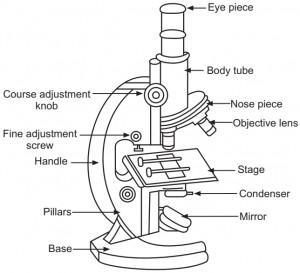Complete Guide to Compound Microscope
Microscope Devices are very crucial for various types of studies and research related to plants, microorganisms, fungi, and many more. So, every student will come across this topic, and they should know what microscope is before moving on to this. They often struggle in this chapter, as it involves various complex sub-topics and questions. Therefore, to help you understand the topic more easily, we have provided a complete guide to Compound microscopes, here in the below article.
What is a Compound Microscope?
The Compound Microscope is a special kind of microscope that features two sets of high resolutions lenses, that are capable of providing a 2-dimensional image of the sample. And because of the presence of two lenses in this microscope, it is referred to as a compound microscope. Moreover, based on the purpose of these microscopes, they are differentiated into multiple types, such as Metallurgical Microscopes, Fluorescence microscopes, Phase Contract Microscopes, and Polarizing microscopes.
Compound Microscope Diagram and Parts
From the above Compound Microscope diagram, as you can observe, there are different types of parts like Eye Piece, Mirror, Base, Course Adjustment Knob, Nose Piece, Stage, Pillars, Base, Fine Adjustment Screw, Body Tube, Handle, Base, Pillars, Objective Lens, and many more. Moreover, all the parts are differentiated into two types, Optical Parts, and Non-Optical Parts.
Functionality of Compound Microscope
As you know, there are many types of microscopes available, like the Compound Microscope However, the main difference is that this microscope has the ability to magnify the complex system in an object. Moreover, there are two types of lenses involved in the Compound Microscope, each having its own function as shown in the Compound Microscope diagram above.

The first Lense acts as a magnifier, and it is placed close to the subject.
While the second one, the ocular Lense helps the individual to view the 2-d image of the subject in more detail.
The working of the compound microscope is very simple, it just requires the light to pass through a transparent object. The result of this process is found in the form of an image, in the objective Lense, and not just that image formed under this Lense is a real image. Moreover, the ocular Lense is used to magnify the real image formed on the first Lens. And the image formed by this process is virtual.
Furthermore, unlike other types of microscopes, in this equipment, the light directly streams from the source to the eye, which is why it is often referred to as a bright-field microscope. Mainly because the image observed under this microscope is very brightly illuminated.
Advantages and Disadvantages of Compound Microscope
Here in this section, we will list the various pros and cons of the Compound Microscope.
Pros of Compound Microscope
It allows users to get a very detailed 2d image of the subject as shown in the diagram of a compound microscope.
Instead of using external light sources, the compound microscopes come fitted with their very own light sources. Moreover, as shown in the diagram of the compound microscope it is very easy to use.
Cons of Compound Microscope
Unlike some other types of microscopes, the magnification available in this compound microscope is limited, after which the users cannot view the image of the subject anymore. Besides, the number of objects users can view using this microscope is also limited.
Conclusion
In the above article, we have given a complete description, and diagram of the Compound Microscope, its Function, Parts of the Compounds Microscope, as well as its various advantages and disadvantages. If you want to learn all the complex topics in Physics like what is microscope, simple microscope diagrams, and compound microscopes more easily, then the online interactive classes offered by tutoroot might be beneficial for you. As it offers various amazing benefits like expert staff, cost-effective prices, doubt-clearing sessions, the best educational guides, and a lot more.
